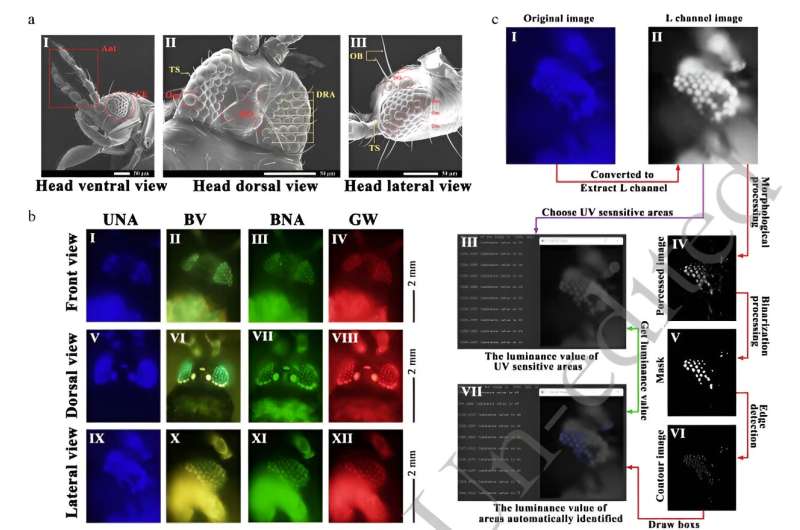This article has been reviewed according to Science X's editorial process and policies. Editors have highlighted the following attributes while ensuring the content's credibility:
fact-checked
proofread
Ultraviolet-absorbing film shows promise in controlling insecticide-resistant thrips in Chinese agriculture

A research team has found that field populations of the thrips Megalurothrips usitatus and Thrips palmi in China have developed high resistance to multiple insecticides, presenting significant control challenges. By utilizing ultraviolet-absorbing film in greenhouses (Uva-FG), they achieved over 96% control efficiency and increased crop yields for cowpea and Hami melon. This research highlights the potential of leveraging thrips' visual systems as an environmentally friendly control method, laying the foundation for future applications in sustainable agriculture.
The findings are published in the journal Tropical Plants.
In China, cowpea cultivation has a long history, primarily in temperate and tropical areas, but faces significant threats from thrips, which damage crops by feeding on young plant parts. Despite various management measures, chemical agents remain the most used control method, leading to high resistance levels in thrips populations. Currently, Megalurothrips usitatus and Thrips palmi exhibit notable resistance to commonly used insecticides, highlighting the need for innovative control methods.
To evaluate resistance in M. usitatus and T. palmi, insecticide surveys were conducted in Haikou and Sanya regions from 2021 to 2023, assessing susceptibility to pyrethroids, neonicotinoids, spinetoram, and emamectin-benzoate. Results indicated a significant increase in resistance to pyrethroids in both thrips species.
Neonicotinoid resistance in Haikou declined, whereas Sanya showed an upward trend. Emamectin-benzoate resistance showed a modest decline in Sanya, while resistance to spinetoram and emamectin-benzoate continued to rise. Additionally, numerous mutations were identified in the sodium channels and nicotinic acetylcholine receptors of these thrips, with high-frequency mutations potentially contributing to resistance.
To address these challenges, the effectiveness of UVa-F in greenhouses was tested, revealing significant thrips population reduction and improved crop yields. The UVa-FG showed a 96.67% and 97.69% control rate for M. usitatus and T. palmi, respectively, with crop yield increase rates of 22.5% and 14.3% respectively for cowpea and Hami melon yields. Further analysis of thrips' compound eyes under UVa-F treatment indicated specific ommatidia responses to UV light, suggesting a visual mechanism behind the control efficacy of UVa-F.
According to the study's senior researcher, Shaoying Wu, "The mechanisms that the thrips use to respond to UV lights and adapt to environmental changes were explored in this study by the analyses of the compound eye structure and vision-related genes in thrips. The upregulation of the vision-related genes was demonstrated under UV light conditions. This study lays a foundation for its field application evaluation."
In summary, this study monitored the resistance of M. usitatus and T. palmi to different insecticides and created a UVa-F for greenhouse application. Analysis of the compound eyes of M. usitatus revealed specific light-sensitive regions and upregulated opsin genes under UV light. Further exploration of thrips' visual mechanisms and UV response could enhance sustainable pest control, decrease insecticide use, and hinder resistance development, ultimately enhancing agricultural practices and crop quality.
More information: Fen Li et al, A new optical practice as an effective alternative to insecticides for controlling highly resistant thrips, Tropical Plants (2024). DOI: 10.48130/tp-0024-0014
Provided by Maximum Academic Press





















